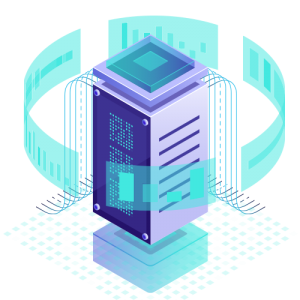
Oracle Database 21c Upgraded with 200+ New Features
Here comes a new decade for technologically supercharged, data-driven businesses. And, Oracle is setting the stage for it in the most spectacular fashion, by announcing their all-new, converged database engine flagship — the Oracle Database 21c. Integrated with some 200+ new, powerful innovations encompassing blockchain tables, in-database JavaScript and AutoML, diversified data types (e.g., native JSON) and workloads support, more advanced persistent memory, etc., the Oracle Database 21c is the new game-changer!
To back it further, the new generation converged database engine is sharding, graph processing, multi-tenancy, and security perfected, for tackling the novel challenges and not merely for addressing the current difficulties in customer relationship management (CRM), supply chain management (SCM), enterprise resource planning (ERP), human capital management (HCM), and so forth. The package also features Oracle’s redefined enterprise application development environment — the Oracle Application Express (or, Oracle APEX) — which is incessantly pioneering the new low-code, on-browser, intuitive graphical interfaced cloud service suited to the modern app developers.
The specifics of the innovation/upgrade
Blockchain Tables: Blockchain technology does not need an introduction for its achievements in recording transactions, and maintaining security, proved next to ‘indestructible’. With Database 21c, it’s now made to work for enterprise applications. As a subset of the Crypto-Secure Data Management by Oracle, Blockchain tables afford equivocally rigid insert-only tables, with their rows attached cryptographically to one another. This eliminates the risk for unauthorized and uncalled-for changes in the database, often undertaken in a bad faith by cyber attackers. To keep simplicity a key factor, the blockchain feature can be retrieved with standard SQL and is compatible with analytics.

Large data types support (feat. native JSON): This part is not completely new as Oracle has already been offering support for JSON query/indexing for a number of years. However, with Database 21c, a new JSON data type representation is at work. Results? Up to 10x swifter scans, while updating operations are clocked for up to 4x faster performance. In contrast to AWS DocumentDB and MongoDB, Oracle performs at a double rate. Further is the flexibility for customers in merging diverse data types, quick OLTP tweaks like JSON element indexing, etc. Users may also run analytics and complex joins encompassing the majority of formats, and numerous JSON documents, respectively, without bothering themselves with custom application codes.
In-database AutoML and JavaScript: Orchestrated creation and comparison of machine learning models at scale. With the focus on simplicity as a major element in Database 21c, the in-database machine learning has a revamped user-friendly UI that exceeds all expectations in making ML a thing for all. Malfunction detection, deep learning analysis, regression has also been remastered with new algorithms in place. Whereas, incorporation of JavaScript is yet another step, in making Database 21c the developers’ and relatively the laymen’s most preferred database engine.
Persistent memory, HP graph, orchestrated in-memory and sharding, and more: The Oracle Database 21c keeps data in local Persistent Memory (PMEM), for amplifying the IO-bound workload performance. High-performance graphs on Oracle Database 21c are all about modeling in the 2020s way, i.e., from the data stockpiled via IoT, social media, etc. Then, there is the automated in-memory column that adds or removes objects, besides running both transactional and analytical workloads. Usage patterns play a critical role, naturally in the above process. The orchestrated database sharding, on the other hand, is for matching data sovereignty as well as privacy regulation via smartly unlocking hyper-performance for enterprises.
The philosophy?
Oracle Database 21c rejects the traditional, unremarkable single-purpose database mechanism, and rather extends support for a multi-tenant, multi-workload, and multi-model database engine, altogether. Especially, in the ever-shifting nature of the global businesses, where technology often needs to take the dictates from the change, and not simply continue on its course unbothered. The Oracle Database 21c is one such example of the phenomenon. And, if that can be coupled with the greater optimized performance of the cloud and on-premise resources, and subsequently, enhanced productivity for all users, why not go for it?
Let’s ‘Converge’ with Infolob!
Oracle Database 21c is undoubtedly setting the standard for a converged database engine very high. And, with Infolob’s unparalleled expertise in not only Database 21c, but 19c, 18c, and all the way up to 11g, businesses can make use of the entire stack of value propositions. Here is a detailed take on the procedures, value propositions, and all the associated, critical, and non-critical implications. Click here!




